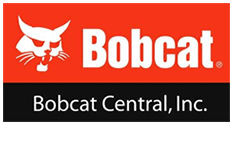Large Excavators: Are They Right for You?
Large Excavators: Are They Right for You?
Large excavators are ideal for operators working on railroads, roadways, bridges and commercial or residential jobsites. If you’re in need of a versatile tool built for powerful trenching and excavating, a large excavator is likely the right choice for your fleet. With a number of excavator sizes and configurations on the market, including mini excavators, it can be difficult to decide which option is best for your business. Find out if a large excavator is the right choice for your next project with these three important considerations.
Excavator Size and Weight
Size is one of the most important things to consider when deciding if a large excavator is right for your business. Each jobsite demands different features from an excavator, and if you work in confined areas like residential properties or commercial jobsites, every inch counts. The type of work you do should also play a role in your purchasing decision. If you’re working on sensitive surfaces or established landscaping, a large excavator with steel tracks could cause damage that leads to site reclamation. Larger excavators can weigh more than 10 tons, so make sure your worksite can accommodate the overall size and weight of a larger machine.
For those operating in more confined work zones, the reduced tail swing of the Bobcat® E145 large excavator allows greater maneuverability, so you can confidently work around obstacles or against walls. If you’re looking for the additional power and productivity that comes with a conventional tail swing, the Bobcat E165 large excavator is a good option. Before purchasing a large excavator, make sure you review the machine specs, compare the different models and determine which option aligns best with the size and weight restrictions of your jobsite.
Transporting Your Excavator
The weight and size of a new machine is just as important when you’re not operating. It impacts how you will transport the excavator to and from jobsites. Due to their size, large excavators require different transportation equipment than compact excavators. If you are used to hauling your compact excavator with a ¾ ton pick-up truck, you’ll have to adjust your line of thinking when looking at an excavator in the 10-ton plus size range. The size and weight of these machines often calls for a larger truck-and-trailer combination compared to a compact excavator.
In addition to securing the proper transportation, it’s important to take weight-limited roads or bridges into account. The Bobcat E145 and E165 large excavators are under many state and province weight limits. So in most cases, no special transportation permit is required when moving these machines.
Rental Options Available
Before adding a new machine to your fleet, evaluate the cost of the excavator compared to the number of hours you expect to run the machine in the coming years. If most of your jobs require smaller or compact equipment, renting a large excavator for those larger, one-off projects might make more financial sense. Renting a large excavator before you buy is a great way to try out the machine on your jobsite before committing to an actual purchase. It also helps you save during tax season. Rental expenses are deductible and can be a tax benefit over purchased equipment that is taxed at a depreciated rate while you own it.
If you’re interested in buying or renting a large excavator for your next job, contact Bobcat Central to see how you can get your hands on this powerful and versatile machine.


